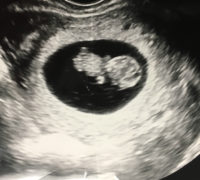Overview
Intrauterine insemination (IUI), sometimes called artificial insemination, is a procedure in which prepared sperm is placed into a woman’s uterine cavity around the time of ovulation. The goal of IUI is to increase the number of sperm that reach the fallopian tubes and subsequently increase the chance of fertilization. IUI can be performed using sperm from a spouse, partner, or donor. Since IUI is a relatively simple procedure and less invasive than other types of fertility treatments, if possible, it is typically attempted before trying other more aggressive procedures, but individualized care and patient prognosis are always evaluated. Millions of babies have been born from an IUI cycle. The average success rate for an IUI cycle ranges from 10% - 20% in one cycle, depending on the patient’s history.
The IUI Process
An IUI cycle may be completed in a natural cycle/unmedicated or with medications to help with ovulation such as oral clomiphene (Clomid) or Letrozole. Injectable gonadotropins are also an option for certain patient populations. After a consultation and evaluation by a fertility doctor, the best course of action for each patient will be recommended.
- Ovulation Monitoring
In an unmedicated IUI cycle, the patient will be monitored for follicle/egg development and maturation via ultrasound. Once it is determined it is time to ovulate either via ultrasound, blood work and/or an at-home ovulation test, insemination will be performed. In a medicated cycle, the patient is given an ovarian stimulation drug(s) to help follicles/eggs grow and mature. The patient is closely monitored by ultrasounds and blood tests to observe egg development and timing for insemination. - Semen Preparation
To prepare sperm for IUI, a sperm sample is collected at home, in-office (or donor sperm is used) and then washed and concentrated. Sperm preparation takes roughly 1 hour to complete and selects the most motile sperm from the man’s semen and concentrates them into a small volume. During this process the sperm is cleansed of prostaglandins which can cause adverse reactions in the uterus. - Insemination
Once it is determined that the egg is about to be released (ovulated) either naturally or after an ovulation-inducing drug has been administered (hCG or trigger shot), the insemination will be scheduled. Intrauterine inseminations take place in the doctor’s office. Using a speculum to access the woman’s cervix, a catheter is inserted and sperm is deposited into the uterine cavity. This process only takes a few minutes to complete, and women are encouraged to rest on the table for 5 minutes afterward. Following the insemination women can then go about their daily activities as usual. There is no need for anesthesia. Rarely some patients may experience mild discomfort and bloating for 1-2 days following the IUI procedure. Pregnancy is confirmed by a blood test about 14 days after the procedure.
When Is IUI Needed?
A consultation and health evaluation of both partners (if not using donor sperm), will determine if IUI is the right course of action for the patient(s). There are several conditions and situations where IUI can help achieve pregnancy.
- Inadequate cervical mucus or a thick cervical mucus
- Mild endometriosis
- Decreased sperm motility
- Low sperm count
- Decreased sperm morphology
- Donor sperm needs to be used
- Unexplained infertility
- Same sex family building
If you are interested in learning more about our IUI process or want to set up a consultation, please contact us.









































































